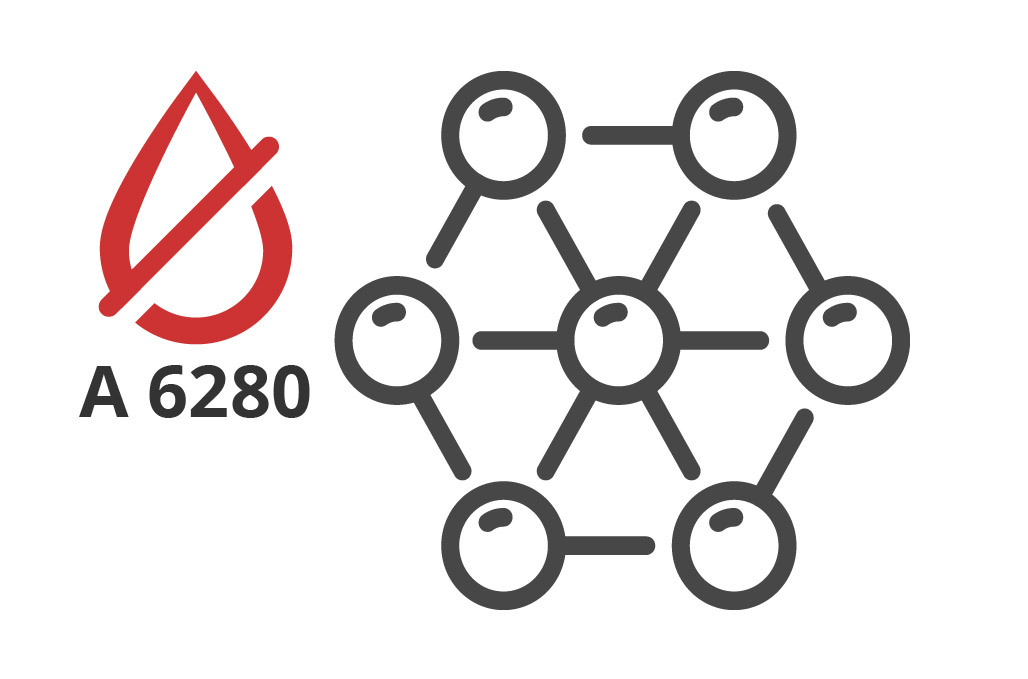A6280 | Anti bleed Additive
- Use in Non-metal-filled systems
- Excellent bleed control on Gold surfaces
- Non halogenated
Product Description
A-6280 is a proprietary non-halogenated additive designed to reduce resin bleed out on a variety of surfaces (especially difficult to control gold surfaces) with minimal or no affect on the adhesion properties of the formulation. It shows excellent results when used in non-metal filled systems. It is co-curable in free-radical polymerization. It can also enhance the rheological properties of various filled adhesives.
A-6280 anti bleed additive is co-curable in free radical polymerization and is recommended for use as an additive to reduce resin bleed out specifically on metal surfaces. The recommended addition of the A-6280 to a formulation is between 0.5% - 1% weight percent of resin. It shows superior bleed control in formulations that contain non-metal fillers such as silica.
Technical Specifications
| General Properties | |
| Appearance Appearance Appearance at room temperature. | Yellow liquid |
| Density (g) | 0.99 g/cm3 |
| Functionality | 2 functional group/molecule |
| Molecular weight | 1178 (Estimated) g/mol |
| Physical Properties | |
| Viscosity Viscosity Viscosity is a measurement of a fluid’s resistance to flow. Viscosity is commonly measured in centiPoise (cP). One cP is defined as the viscosity of water and all other viscosities are derived from this base. MPa is another common unit with a 1:1 conversion to cP. A product like honey would have a much higher viscosity -around 10,000 cPs- compared to water. As a result, honey would flow much slower out of a tipped glass than water would. The viscosity of a material can be decreased with an increase in temperature in order to better suit an application | 63 mPa.s |
| Thermal Properties | |
| Flash Point Flash Point The flashpoint of a solvent is the lowest possible temperature at which it can vaporize to form an ignitable vapor. Flashpoint is often confused with “autoignition temperature”, which is the temperature at which a solvent ignites without an ignition source. | 154 °C |
Additional Information
Flash point considerations
We've used anti-bleeds in die attach pastes for years. We did not see nor did we get reports of the die attach pastes (or the components thereof) causing voids during curing. Additionally, the fact that the DMI products will cure into the matrix also reduces volatility concerns.
Can I use this as a preapplied/non mix product to reduce bleeding in die attach?
Right now the materials are 100% product, but, if you diluted them with a volatile solvent to aid in the application it might be possible. The process might be:
- Apply
- Dry (not too hot)
- Perform die attach to lock everything in place.
This could potentially work better than the mixed version as the resin would hit a roadblock when it encountered the relatively concentrated antibleed. If you get too much under the die attach you will likely destroy the adhesion. The tricky part would be how to prepare the solution and how to apply the antibleed mixture and keep it contained.
You can do some simple experiments to see if the concept holds promise:
- Dilute some antibleed with solvent (i.e. toluene)
- Dot some on a substrate and gently dry
- Dot some of the die attach paste and cure it up.
Good luck!
Can we use Anti bleed additives in Epoxy formulations
Typically, we recommend the anti-bleed based upon the type of substrate on which the adhesive is being used. The A6280 (and the A6225) have been shown to be effective on metallic surfaces like copper traces and difficult-to-manage gold. Other products may be more effective on printed circuit boards or solder mask material. However, this experience has been with free-radical cured resins (not epoxies) so chemical compatibility is a question to be answered.
- The DMI anti-bleed additives work by relying on the lack of compatibility of the siloxane portion of the molecule to encourage the product to migrate to the surface of the fillet where the functional group works to bond to the substrate to block bleed.
- We believe the migration system will work in a similar manner for epoxy adhesives but the resin bleed blocking function may be at risk.
- Our anti-bleed materials rely on either acid (p/n: A6150, A6265) or thiol (p/n: A6225, A6280) functionality to bond in and prevent bleed. Unfortunately, both of these groups react with epoxy resins. Reacting with epoxy (instead of the substrate) may reduce or eliminate the resin bleed functionality.
Bottom line - we don't know if it will work. We are currently working on some modifications that could make anti bleeds even more epoxy friendly. This doesn't imply that the current formulations won't work with epoxies. But that if they don't we have more tricks up our sleeves.




